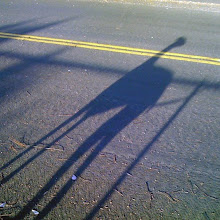We Live as We Dream, Alone
Plotless and pitiless, the film is, and one directly connects with the other. For the characters it presents don't seem to have forward motion, don't seem to have hope. They just get to be, from scene to scene, and every moment of possible freedom shuts down--characters not only fail to win at the horsetrack, they never even get to the park to place a bet. After awhile you don't even think about the film being shot in black and white--the world seems that colorless and grim.

That's not to say the film is unrelenting. We see children jump from rooftop to rooftop from below, and airborne they have a brief freedom that is scary and earned. We see a young girl make her own words up to sing-along with Earth, Wind, and Fire on the radio, playing with her doll, but we also know when she gets older those simple lyrical promises might leave her like her mom, in the kitchen primping for a husband too tired to notice her when he gets home. Mom does this in the reflective lid of a pan as she makes dinner; it's her only break, her moment for hope.
Maybe not her only. One of the film's most famous scenes has the wife and her husband (the film's titular character, and the film's steady-eyed matter-of-factness extends to the abattoir scenes in which slaughter seems merely the daily business, drained of blood) sharing a slow dance to Dinah Washington's powerful "This Bitter Earth." At first they move by the numbers--you can almost hear counting it's so lugubrious. But then they edge in a bit, the wife's hands grasping more than caressing her shirtless husband, and what you get is familiarity bleeding into desperate need. They do all this in front of window that leaves them backlit, but it seems more like void than sun outside; it's light as blight not light as bright. Of course the song ends, the clutch ends, the scene ends.
So yes, this is a film about black and white in black and white, but that's just one of the distances it maps. From us to others, from sex to sex, from ourselves to our work, from ourselves to ourselves. Killer of Sheep might not build, but it accumulates, a film uniquely human, and therefore uniquely painful.
Labels: charles burnett, film



2 Comments:
"more success ... than Burnett has ever had with his film, which didn't even get a proper release until this year"
Burnett didn't seek success or "a proper release" for the film:
http://www.cbc.ca/arts/film/killerofsheep.html
"I never had the means of distributing it,” says writer-director Charles Burnett, now 63, over the phone from his home in Los Angeles. “I made it with music without getting clearances because I always thought it would be seen only by a small audience of activists.”
Indeed, I left out the entire tale of the film getting restored and then Dennis Doros at Milestone (a fine man that I knew back when I booked filmed as a grad student a billion years ago) worked on clearing all the music, which is essential to the film and incredibly expensive (with a big financial assist from Steve Soderbergh).
As for Burnett not seeking success, sure, but it's a horrible shame one of the best filmmakers of the past 40 years has had so few chances to make films. Tells us plenty about our culture. (His film To Sleep with Anger is another one of my favorites.)
Post a Comment
<< Home